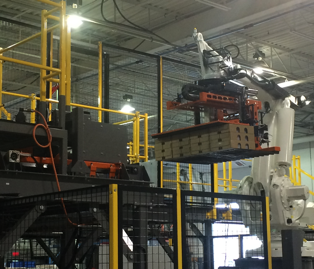 Many industries, such as food and beverage, personal care, and pharmaceuticals that handle boxes or packages on end of production lines are commonly used to the fact that, when starting operations, workflows are manageable and operators complete many activities manually. However, these industries grow considerably and, with this new product management, the operation becomes unsustainable.
Many industries, such as food and beverage, personal care, and pharmaceuticals that handle boxes or packages on end of production lines are commonly used to the fact that, when starting operations, workflows are manageable and operators complete many activities manually. However, these industries grow considerably and, with this new product management, the operation becomes unsustainable.
The following are 3 cutting-edge solutions that prove value for your end of production line.
- Sorters
You may have probably asked yourself plenty of times, what automated solutions can be implemented to transfer a finished product to the warehouse in a practical way?
Many times this requires conveyors that collect all production lines (through a merger or automated confluences), leading them to a sorter. This solution, when implemented properly, creates an efficient traffic without damaging the product. Once transferred to the warehouse, the product is reclassified.
When reaching this point, we must evaluate if the rate is manageable and complies with proper working conditions that ensure no damages will occur. Only like this may the products be manually palletized.
However, when lines have a high product flow, automatic palletizing is recommended. It all depends on the product features, flows, and specific needs.
- Automatic palletizing
Refers to planking without the use of human workforce. On the contrary, specially-designed automatic equipment is required. An end of the line with a high product flow or with a high volume of human work force benefits from automatic palletizing. Depending on the flows, size, product thickness, and process complexity, the optimal palletizing solution will be selected for each application (even robotic palletizing).
With the use of sorters, automatic palletizing, and the respective software, production inputs and outputs may be recorded, and identify the batch in which the product is found, along with when and in which line was it processed.
- AGV´s
Another case is when the client wishes to product to arrive directly to the loading dock. If only forklifts were to be used, the operation would become a logistics chaos; this is why we recommend implementing AGVs.
The AGV is a guided vehicle that retrieves the product and scans its bar code before placing it in the warehouse. This way the software assumes traffic control (it may even handle various paths). It also warns about pending and in transit tasks, providing peace of mind to the entire operation. Remember that chaotic operations are the result of a lack of proper planning and care, and consequences reflect in a considerable increase in costs, time, and losses.



